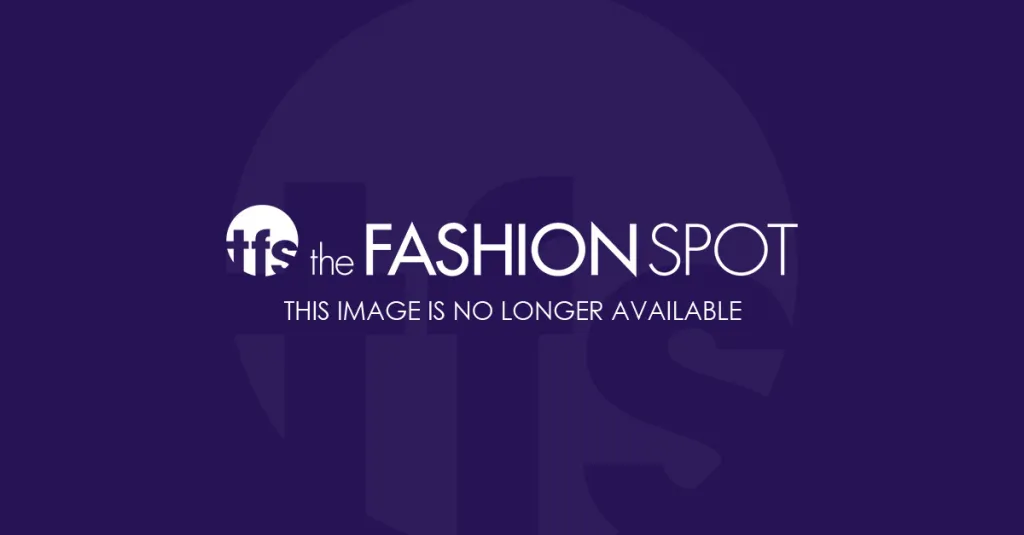Rihanna took to Instagram this week to model her Rihanna for River Island collection and fans were excited for their first look of the singer in her designs. When she showed the collection at London Fashion Week, she used models and did not wear the collection herself, probably in an effort to appeal to the fashion industry and editors. It didn’t necessarily pan out, since the collection received lukewarm reviews at best from the industry, so it’s possible this is an effort to change marketing strategy and appeal more to fans of her music and personality than industry insiders. But that’s the thing about a star like Rihanna, she is known as much for her style and tabloid antics as she is for her music. This is an important factor in how willing fans are to see their favorite stars as fashion designers.
Arguably, the best-known musicians-turned-fashion-designers have passed the point where die-hard fans are questioning their every endorsement deal by the time they score their own clothing line. For instance, Gwen Stefani had already distanced herself from her band No Doubt’s punk and ska roots by the time she launched a clothing line. The group’s 2001 Rock Steady was a dance record more than anything, by all accounts. And she had already logged cross-category collaborations with the pop-friendly South Side with Moby in 2000 and an R&B hit with rapper Eve in 2001 (Let Me Blow Ya Mind) by the time she debuted her clothing line L.A.M.B. in 2004. Ostensibly, these projects had already diluted her punk/ska purity. The clothing line coincided with her solo album of the same name, which was such a pop departure for the singer its backlash from rock fans really overshadowed any quibbles they had about a high-end fashion line.

Sonic Youth frontwoman Kim Gordon, whose rock ‘n’ roll cred has really never been questioned (the lady can appear on Gilmore Girls and Gossip Girl without a backlash, she’s that cool) hit on the crux of the issue while discussing her capsule collection for Surface to Air. She said she won’t be doing a full line because “there are so many other things that are more of a priority for me, like doing art.” Ouch. She earned no love from the fashion industry for that quote, proving that pressure to be an authentic artist from the wearer or listener’s perspective comes from both sides of the divide.
One musical category that gets more unquestioning support from its fan base is the rap and R&B community. Some under-the-mainstream-radar artists who earn their stripes trading tapes on the street might face criticism if they inked a more commercial deal with a clothing company. But even bad-ass rappers who have proven themselves by the standards of their peers can sign lucrative clothing contracts and it boosts sales for both endeavors — Eminem, 50 Cent and Kanye West have all launched fashion companies that see success from within their musical community as well as outside of it. The theory stands that this is because the financial excess typified by high-end fashion is often celebrated in rap culture (every Kanye song ever) in a way that it is usually satirized in rock, if it is addressed at all (Weezer’s Beverly Hills comes to mind). Where bling may be a status symbol in some rap and R&B communities, an unwashed, old T-shirt and jeans aesthetic is cultivated by many a rock star. Even if their specific look is misleadingly expensive, as seen when Green Day’s Billie Joe Armstrong wears John Varvatos on tour the way Rihanna wears Givenchy, a realistically similar stylistic statement can be made on the cheap. The impression that is broadcast is that the values of the two communities are at odds. Whether this is because rap artists are less conflicted about commercial success or more honest about embracing the dollar signs that come with stardom, or from some true altruistic loyalty to a starving artist ideal in the rock community is highly subjective.
A rock megastar like Bono has both the mainstream success defense and the altruistic defense when it comes to his label Edun. The U2 connection is downplayed, or at least not heavily promoted, and really Bono was already one of the most recognizable stars in the world known for lots activism outside of music when he backed the label. The African-trade friendly line also boasts lots of eco-conscious appeal, so those $300 jeans are guilt-free, practically a tax write off you’re doing so much good! The line is perhaps one of the most well regarded by a musician by the fashion community at large, without really enjoying the household name status of its benefactor. Bono detractors had all the ammunition they needed when he started wearing those sunglasses to the White House anyway, no ball busting for a fashion line required.
When it comes down to lesser known and up and coming artists, endorsement deals are becoming so common and one’s fashion and beauty iconography is such a focus in the media that the lines are really blurred. No one blinks an eye when Taylor Swift does a collection for Keds (let alone a Diet Coke ambassador) because a pop star is already part of a big machine of materialism. More tellingly, fans aren’t as harsh when Paramore frontwoman Haley Williams does a color collection for one of the most expensive makeup lines around, MAC, as they might have been on Courtney Love in the early 90s. And the Courtney Love of the 00s is as promiscuous when it comes to endorsement deals as she claims to have been on tour back then. The times, they are a changing and selling out is more of a mechanization of a struggling industry than a sign of an artist abandoning their ideals.
images: Getty

